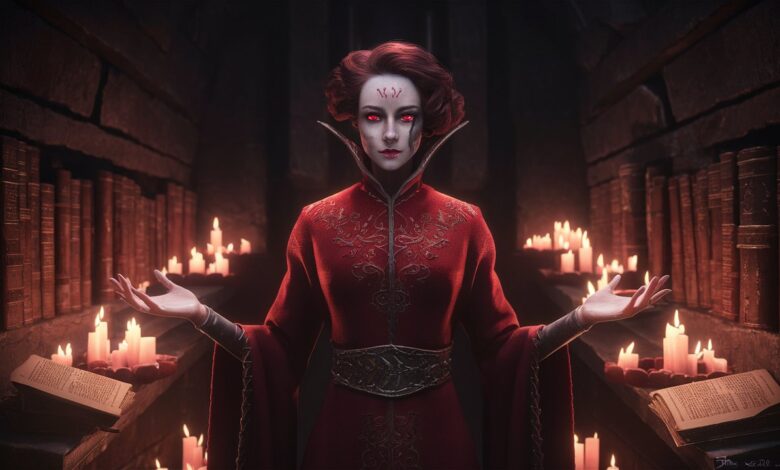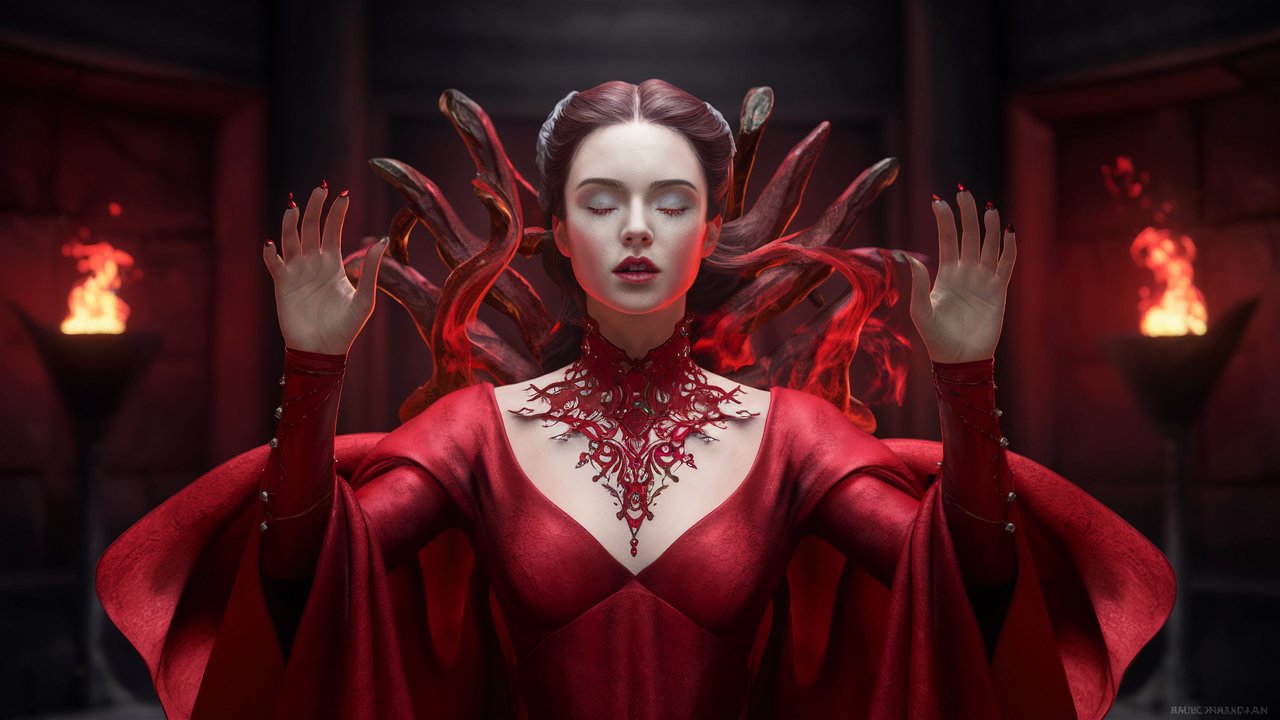Imagesize:2160×3840 melisandre: The Red Priestess of Fire and Prophecy

Among the most enigmatic and unforgettable characters in the world of fantasy television and literature, imagesize:2160×3840 melisandre, the Red Woman, shines as one of the most complex figures ever created. Known for her mystical powers, unwavering faith, and striking appearance, Melisandre played a pivotal role in Game of Thrones. Her influence extended far beyond simple sorcery; she was a symbol of fire, prophecy, and the struggle between light and darkness. In this comprehensive guide, we explore every facet of Melisandre, from her origins and powers to her impact on the series, while also examining her deeper symbolism and cultural significance.
Who Is Melisandre?
Imagesize:2160×3840 melisandre of Asshai, more commonly known as the Red Woman, was a priestess of the Lord of Light, R’hllor. She arrived at the court of Stannis Baratheon, convinced that he was the prophesied hero, Azor Ahai reborn, destined to save the world from darkness. Her allure was not only physical, with her striking red robes and fiery hair, but also spiritual, as she wielded powerful magic capable of influencing kings and shifting the balance of power.
What made her unique was the mystical aura surrounding her character. She was not merely a manipulator of politics but a divine interpreter of visions and prophecies, willing to sacrifice anything—sometimes tragically—to fulfill what she believed was destiny.
Melisandre’s Powers and Magic
One of the most fascinating aspects of Melisandre was her command of mystical powers rooted in fire and shadow. Her magic was not illusions or tricks, but real, tangible forces that shaped the narrative of the series. Some of her most well-known abilities included:
-
Shadowbinding: She birthed a shadow assassin that killed Renly Baratheon, proving her devastating powers were not just symbolic but deadly.
-
Resurrection: Perhaps her most famous act was resurrecting Jon Snow, bringing him back from death and securing her role in one of the most critical turning points of the story.
-
Prophecy and Visions: Through fire, she read glimpses of the future, although often clouded and open to interpretation.
-
Illusion and Glamour: Her youthful beauty was later revealed to be sustained by powerful magic, concealing her true, ancient form.
These magical elements highlighted her role as more than a priestess—she was a bridge between mortals and divine forces, embodying both the dangers and promises of faith-driven power.
The Symbolism of Fire and Light
Fire was central to Melisandre’s character, not only as her tool but as her spiritual essence. As a priestess of R’hllor, she believed that light represented truth and salvation, while darkness represented death and destruction. Her fire-centered rituals symbolized purification, destruction of enemies, and guidance through visions.
In literary terms, Melisandre was a living embodiment of duality: fire both gives life and destroys, just as her actions saved lives but also caused devastation. Her reliance on fire revealed a broader theme—the danger of absolute faith in prophecy, which can blind followers to the consequences of their actions.
Melisandre and Stannis Baratheon
Melisandre’s relationship with Stannis Baratheon was one of the most defining aspects of her story. Believing him to be the chosen one, she guided him with unwavering devotion. Her influence was both political and spiritual, strengthening Stannis’ resolve while also isolating him from traditional advisors.
Tragically, her guidance led to one of the most infamous acts in Game of Thrones: the sacrifice of Princess Shireen, Stannis’ daughter, to the flames. This moment became a turning point in Melisandre’s character arc, marking the darkest consequences of blind faith and showing the destructive potential of her unwavering belief in prophecy.

Melisandre and Jon Snow
If Stannis represented the tragedy of misplaced faith, Jon Snow represented redemption for Melisandre. After Stannis’ downfall, she redirected her focus to Jon, eventually becoming the instrument of his miraculous resurrection. This moment was crucial, both in the narrative and in cementing Melisandre’s role as a powerful yet unpredictable force.
Her alliance with Jon Snow highlighted the complexity of her character. While once seen as a manipulative zealot, her role in Jon’s revival proved that her magic could also serve hope and salvation. Ultimately, she aided Jon and Daenerys in the Battle of Winterfell, ensuring the living had a chance to defeat the Night King.
Melisandre’s True Age and Identity
One of the most shocking revelations in the series was the true nature of Melisandre’s identity. When she removed her enchanted necklace, she revealed her true form as an ancient, frail woman, suggesting that her youthful appearance was an illusion maintained through powerful magic.
This revelation added layers of depth to her character, emphasizing that her strength came not from beauty but from enduring faith and longevity. It also sparked endless discussions about her origins in Asshai, a mysterious city in Essos known for its dark sorcery, further enhancing her enigmatic aura.
The Redemption and Death of Melisandre
Melisandre’s final act in the series was one of redemption and closure. After fulfilling her role in the Battle of Winterfell, she accepted that her purpose was complete. Removing her enchanted necklace, she walked into the snow, revealing her true form before collapsing into dust.
Her death was symbolic—a release from centuries of devotion, sacrifice, and burden. It illustrated the cyclical nature of prophecy, where once her mission was done, her existence had no further purpose. For fans, this ending was both haunting and poetic, cementing Melisandre as one of the most unforgettable figures in fantasy storytelling.
The Cultural Impact of Melisandre
Beyond the world of Westeros, Melisandre became a cultural icon. Her striking image in red robes, her cryptic speeches about fire and darkness, and her morally ambiguous choices made her a fascinating character of debate and analysis.
She embodied themes of faith versus doubt, light versus darkness, and destiny versus free will. Her character encouraged audiences to reflect on the dangers of unchecked belief while also admiring the strength of conviction. In the broader landscape of fantasy literature, Melisandre stands as one of the most intriguing depictions of a priestess-figure, blending power, mystery, and tragedy in equal measure.
Conclusion
FAQ about Melisandre
Q1: Was Melisandre truly evil?
No, Melisandre was not purely evil. She acted out of devotion to her god, often believing she was serving the greater good, though her actions had tragic consequences.
Q2: How old was Melisandre really?
Her true age was never explicitly revealed, but her transformation showed she was likely several centuries old, kept alive through magic.
Q3: Why did Melisandre resurrect Jon Snow?
She believed Jon Snow had a greater role to play in the battle against darkness, guided by visions that suggested he was central to prophecy.
Q4: What was Melisandre’s true purpose?
Her purpose was to serve the Lord of Light and aid in the battle against the Night King, a mission that ended after the victory at Winterfell.
Q5: What did Melisandre symbolize?
She symbolized the duality of faith and power, where light can both save and destroy, depending on how it is wielded.



